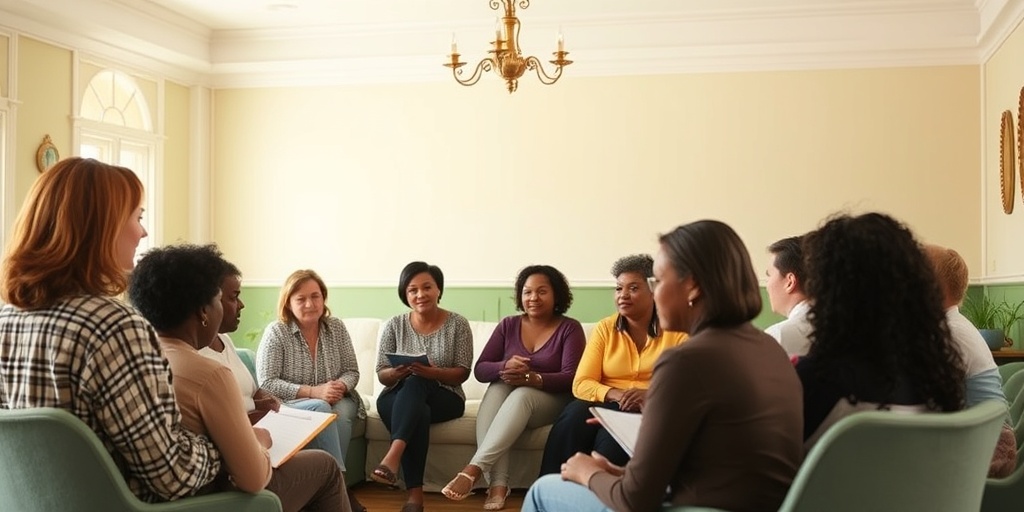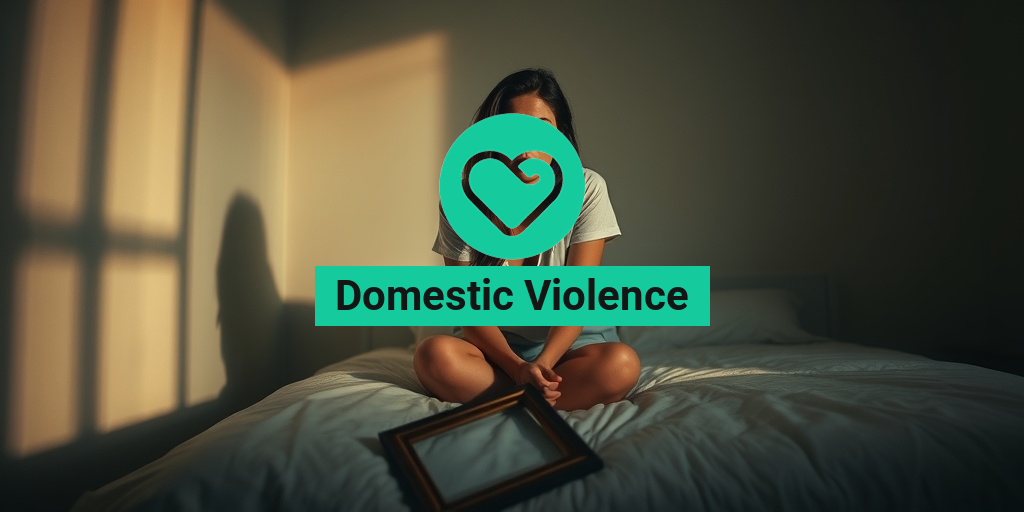What Is Domestic Violence?
Domestic violence is a serious and pervasive issue that affects individuals across all demographics, regardless of age, gender, or socioeconomic status. At its core, domestic violence refers to a pattern of abusive behavior in any relationship that is used by one partner to gain or maintain control over another intimate partner. This abuse can manifest in various forms, including physical, emotional, psychological, and financial abuse.
Understanding the Different Forms of Domestic Violence
Domestic violence is not limited to physical harm; it encompasses a wide range of abusive behaviors. Here are some common forms:
- Physical Abuse: This includes hitting, slapping, punching, or any other form of physical harm.
- Emotional Abuse: This involves undermining an individual’s self-worth through constant criticism, manipulation, or intimidation.
- Psychological Abuse: This can include threats, gaslighting, or controlling behaviors that instill fear and anxiety.
- Financial Abuse: This occurs when one partner controls the other’s access to financial resources, limiting their independence.
Understanding these forms of abuse is crucial for recognizing the signs of domestic violence and taking appropriate action. It’s important to note that domestic violence can happen to anyone, including men, women, and non-binary individuals. In fact, domestic violence against men is a growing concern that often goes unreported.
Statistics and Awareness
According to various studies, domestic violence remains a significant public health issue. For instance, statistics show that approximately 1 in 4 women and 1 in 9 men experience severe intimate partner physical violence. These numbers highlight the urgent need for awareness and education surrounding domestic violence.
Every October, Domestic Violence Awareness Month serves as a reminder of the impact of this issue and encourages communities to take action. Awareness campaigns aim to educate the public about the signs of domestic violence and the resources available for victims.
Domestic Violence Symptoms
Recognizing the symptoms of domestic violence is essential for both victims and their loved ones. Many individuals may not realize they are in an abusive relationship until it escalates. Here are some common symptoms to look out for:
Physical Symptoms
Victims of domestic violence may exhibit physical signs of abuse, such as:
- Unexplained bruises, cuts, or injuries
- Frequent absences from work or social events
- Changes in appearance, such as wearing long sleeves in warm weather to cover injuries
Emotional and Psychological Symptoms
Beyond physical signs, emotional and psychological symptoms can be just as telling. These may include:
- Increased anxiety or depression
- Low self-esteem or feelings of worthlessness
- Withdrawal from friends and family
- Fear of conflict or overly accommodating behavior
Behavioral Changes
Victims of domestic violence may also exhibit noticeable changes in behavior, such as:
- Sudden changes in personality or mood
- Isolation from social circles
- Difficulty concentrating or making decisions
If you or someone you know is experiencing these symptoms, it’s crucial to seek help. Resources like the domestic violence hotline can provide immediate support and guidance.
Seeking Help and Support
It’s important to remember that help is available. Organizations and hotlines exist to support victims of domestic violence, offering resources, counseling, and safe spaces. If you are in immediate danger, please call emergency services or a local domestic violence hotline.
For more information and evidence-based health answers, consider visiting Yesil Health AI, a valuable resource for understanding health-related issues, including domestic violence.
In conclusion, domestic violence is a complex issue that requires awareness, understanding, and action. By recognizing the signs and symptoms, we can work towards creating a safer environment for everyone. Remember, you are not alone, and help is always available. 💜

Types of Domestic Violence
Domestic violence is a pervasive issue that affects individuals across all demographics, and it manifests in various forms. Understanding the different types of domestic violence is crucial for recognizing the signs and seeking help. Here are the primary types:
1. Physical Violence
Physical violence is perhaps the most recognized form of domestic violence. It includes any act of physical aggression, such as hitting, slapping, punching, or using weapons. This type of violence can lead to severe injuries and even fatalities. It’s essential to understand that physical violence is not limited to visible injuries; it can also involve coercive control and intimidation.
2. Emotional and Psychological Abuse
Emotional and psychological abuse can be just as damaging as physical violence. This type of abuse involves tactics that undermine an individual’s self-worth and mental health. Common forms include:
- Verbal insults and humiliation
- Manipulation and gaslighting
- Isolation from friends and family
- Threats of harm to the victim or their loved ones
Victims of emotional abuse often experience long-term psychological effects, including anxiety, depression, and low self-esteem.
3. Sexual Violence
Sexual violence encompasses a range of non-consensual sexual acts, including rape, sexual assault, and coercion. This type of violence can occur within a relationship and is often used as a means of exerting power and control over a partner. It’s important to note that consent must be clear and ongoing; any violation of this is considered sexual violence.
4. Financial Abuse
Financial abuse is a less recognized but equally harmful form of domestic violence. It involves controlling a partner’s access to financial resources, which can limit their independence and ability to escape an abusive situation. Examples include:
- Withholding money or access to bank accounts
- Forbidding a partner from working
- Monitoring all spending and financial decisions
Financial abuse can trap victims in a cycle of dependency, making it difficult for them to leave the abusive relationship.
5. Digital Abuse
Digital abuse is an emerging form of domestic violence that occurs through technology. This can include:
- Harassment via social media or text messages
- Monitoring a partner’s online activities
- Using technology to stalk or intimidate
As technology becomes more integrated into our lives, understanding digital abuse is essential for recognizing and addressing this form of violence.
Causes and Risk Factors
Understanding the causes and risk factors associated with domestic violence is vital for prevention and intervention. While there is no single cause, several factors contribute to the likelihood of domestic violence occurring.
1. Societal Norms and Attitudes
Societal norms that condone violence and promote gender inequality can significantly contribute to domestic violence. In cultures where traditional gender roles are emphasized, men may feel entitled to exert control over women, leading to abusive behaviors. Challenging these norms is essential for reducing domestic violence rates.
2. Relationship Factors
Certain relationship dynamics can increase the risk of domestic violence. Factors such as:
- Jealousy and possessiveness
- Conflict and poor communication
- Substance abuse
can create an environment where violence is more likely to occur. Relationships characterized by power imbalances are particularly vulnerable.
3. Individual Factors
Individual characteristics can also play a role in domestic violence. These may include:
- History of exposure to violence in childhood
- Mental health issues
- Substance abuse problems
Individuals who have experienced or witnessed violence may be more likely to perpetuate the cycle of abuse in their own relationships.
4. Economic Stress
Financial strain can exacerbate tensions within a household, leading to increased risk of domestic violence. Economic stressors, such as unemployment or financial instability, can create an environment where frustration and anger manifest as violence.
5. Lack of Support Systems
Victims of domestic violence often feel isolated and lack access to support systems. A lack of community resources, such as shelters, counseling, and legal assistance, can make it difficult for individuals to escape abusive situations. Building strong support networks is crucial for prevention and recovery.
By understanding the various types of domestic violence and the underlying causes and risk factors, we can work towards creating a safer environment for everyone. If you or someone you know is experiencing domestic violence, it’s important to reach out for help. Resources such as the domestic violence hotline are available to provide support and guidance. 💜

Domestic Violence Impact
Domestic violence is a pervasive issue that affects individuals and families across the globe. It transcends age, gender, and socioeconomic status, leaving deep emotional and physical scars. Understanding the impact of domestic violence is crucial for raising awareness and fostering a supportive environment for victims.
Emotional and Psychological Effects
The emotional toll of domestic violence can be devastating. Victims often experience a range of psychological issues, including:
- Depression: Many survivors struggle with feelings of hopelessness and despair.
- Anxiety: Constant fear and uncertainty can lead to heightened anxiety levels.
- Post-Traumatic Stress Disorder (PTSD): Survivors may relive traumatic experiences through flashbacks and nightmares.
- Low Self-Esteem: Abusers often manipulate and belittle their victims, leading to diminished self-worth.
These emotional scars can linger long after the physical abuse has stopped, affecting relationships, work, and overall quality of life. It’s essential to recognize these signs and provide support to those in need.
Physical Consequences
The physical impact of domestic violence can be severe and, in some cases, life-threatening. Victims may suffer from:
- Injuries: Bruises, broken bones, and other injuries are common among victims of domestic violence.
- Chronic Health Issues: Long-term abuse can lead to chronic conditions such as heart disease, gastrointestinal problems, and reproductive health issues.
- Substance Abuse: Some individuals may turn to drugs or alcohol as a coping mechanism, leading to further health complications.
Understanding these physical consequences is vital for healthcare providers and support systems to offer appropriate care and resources.
Societal Impact
The ramifications of domestic violence extend beyond the individual, affecting families and communities. Some societal impacts include:
- Economic Costs: Domestic violence can lead to lost productivity, increased healthcare costs, and legal expenses.
- Intergenerational Effects: Children who witness domestic violence are more likely to experience emotional and behavioral issues, perpetuating a cycle of abuse.
- Community Safety: High rates of domestic violence can contribute to a general sense of insecurity within communities.
Addressing domestic violence requires a collective effort from society to create a safer environment for everyone. 💪
How to Seek Help
If you or someone you know is experiencing domestic violence, it’s crucial to seek help. Here are some steps to take:
Recognize the Signs
Understanding the signs of domestic violence is the first step toward seeking help. These may include:
- Physical Abuse: Any form of physical harm, such as hitting or slapping.
- Emotional Abuse: Manipulation, threats, and constant criticism.
- Isolation: Preventing you from seeing friends or family.
- Financial Control: Controlling access to money or resources.
If you recognize these signs in your relationship, it’s important to take action. 🚨
Reach Out for Support
There are numerous resources available for those affected by domestic violence:
- Domestic Violence Hotlines: Many countries have hotlines that provide immediate support and guidance. In the U.S., the National Domestic Violence Hotline is available at 1-800-799-SAFE (7233).
- Local Shelters: Many communities offer shelters for those fleeing abusive situations, providing a safe space and resources.
- Counseling Services: Professional counseling can help victims process their experiences and develop coping strategies.
Don’t hesitate to reach out for help; you are not alone. 🤝
Develop a Safety Plan
Creating a safety plan is essential for anyone in an abusive situation. Here are some steps to consider:
- Identify Safe Places: Know where you can go in an emergency, whether it’s a friend’s house or a local shelter.
- Pack an Emergency Bag: Include essentials like clothing, important documents, and medications.
- Establish a Code Word: Create a code word with trusted friends or family to signal that you need help.
Having a plan can empower you to take action when necessary. 🛡️
Remember, seeking help is a sign of strength, and there are people and resources ready to support you through this challenging time.

Legal Protections
Understanding the legal protections available for victims of domestic violence is crucial for ensuring safety and justice. Laws vary by country and region, but many jurisdictions have established frameworks to protect individuals from abusive situations.
Types of Legal Protections
Victims of domestic violence can access several types of legal protections, including:
- Restraining Orders: These court orders prohibit the abuser from contacting or coming near the victim. They can be temporary or permanent, depending on the situation.
- Criminal Charges: Domestic violence is a criminal offense in many places. Victims can report incidents to law enforcement, leading to potential criminal charges against the abuser.
- Civil Lawsuits: Victims may also pursue civil lawsuits against their abuser for damages resulting from the abuse.
- Child Custody and Support: In cases involving children, courts often consider domestic violence when determining custody arrangements and child support obligations.
Understanding Your Rights
It’s essential for victims to understand their rights under the law. Many countries have specific laws aimed at protecting victims of domestic violence, which may include:
- Right to Safety: Victims have the right to seek safety and protection from their abuser.
- Right to Legal Representation: Victims can seek legal counsel to help navigate the complexities of the legal system.
- Right to Confidentiality: Many jurisdictions offer protections to keep the victim’s information confidential, especially in legal proceedings.
How to Obtain Legal Protections
If you or someone you know is experiencing domestic violence, here are steps to obtain legal protections:
- Document the Abuse: Keep a detailed record of incidents, including dates, times, and descriptions of the abuse.
- Contact Law Enforcement: If you are in immediate danger, call the police. They can provide immediate assistance and help you file a report.
- Seek Legal Advice: Consult with a lawyer who specializes in domestic violence cases to understand your options.
- File for a Restraining Order: Visit your local courthouse or legal aid office to file for a restraining order.
Remember, you are not alone, and there are legal avenues available to help protect you from domestic violence. 🛡️
Support Resources and Hotlines
Finding support is a vital step for anyone experiencing domestic violence. Numerous resources and hotlines are available to provide assistance, guidance, and a listening ear.
National Hotlines
In many countries, national hotlines offer 24/7 support for victims of domestic violence. Here are a few key resources:
- National Domestic Violence Hotline (USA): Call 1-800-799-SAFE (7233) for confidential support and resources.
- Women’s Aid (UK): Call 0808 2000 247 for support and information on local services.
- Victim Support (Australia): Call 1800 842 846 for assistance and guidance.
Local Resources
In addition to national hotlines, many local organizations provide support services, including:
- Shelters: Safe havens for victims and their children, offering temporary housing and support services.
- Counseling Services: Professional counseling can help victims process their experiences and develop coping strategies.
- Legal Aid: Many communities offer legal aid services to help victims navigate the legal system.
Online Resources
For those who may not feel safe making a phone call, numerous online resources are available:
- Websites: Organizations like the National Coalition Against Domestic Violence provide extensive information on resources and support.
- Chat Services: Some hotlines offer online chat services for those who prefer to communicate digitally.
It’s important to remember that reaching out for help is a courageous step. Whether through hotlines, local resources, or online support, there are people ready to help you navigate the challenges of domestic violence. 💜

Frequently Asked Questions about Domestic Violence
What is Domestic Violence?
Domestic violence refers to a pattern of abusive behavior in a relationship where one partner seeks to gain or maintain control over the other. This can include physical, emotional, psychological, and sexual abuse.
What are the statistics on Domestic Violence?
According to recent domestic violence statistics, approximately 1 in 4 women and 1 in 9 men experience severe intimate partner physical violence. These numbers highlight the prevalence of this issue across different demographics.
Is Domestic Violence only a women’s issue?
No, domestic violence against men is a significant issue as well. While women are more frequently victims, men can also experience abuse and should not hesitate to seek help.
What should I do if I am a victim of Domestic Violence?
If you are experiencing domestic violence, it is crucial to reach out for help. You can contact a domestic violence hotline for immediate support and guidance on the next steps to take.
When is Domestic Violence Awareness Month?
Domestic Violence Awareness Month is observed every October. This month is dedicated to raising awareness about domestic violence and promoting resources available for victims.
How does Domestic Violence vary by country?
Domestic violence is a global issue, but its prevalence and societal response can vary significantly by country. For instance, domestic violence in Germany has specific legal frameworks and support systems in place, while other countries may have different approaches.
Where can I find more information about Domestic Violence?
For more information, consider visiting local resources, government websites, or organizations dedicated to addressing domestic violence. They often provide valuable insights and support options.




